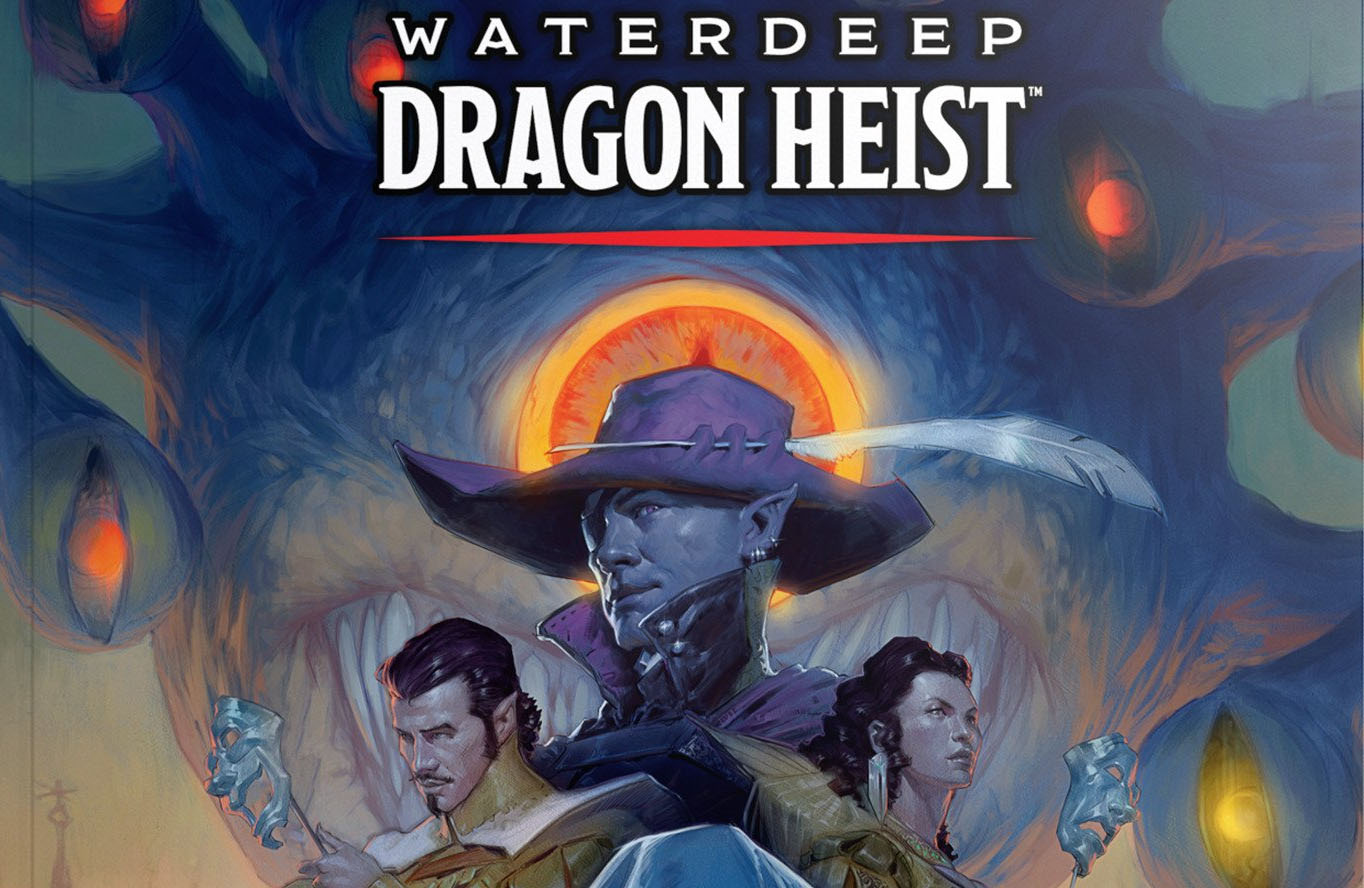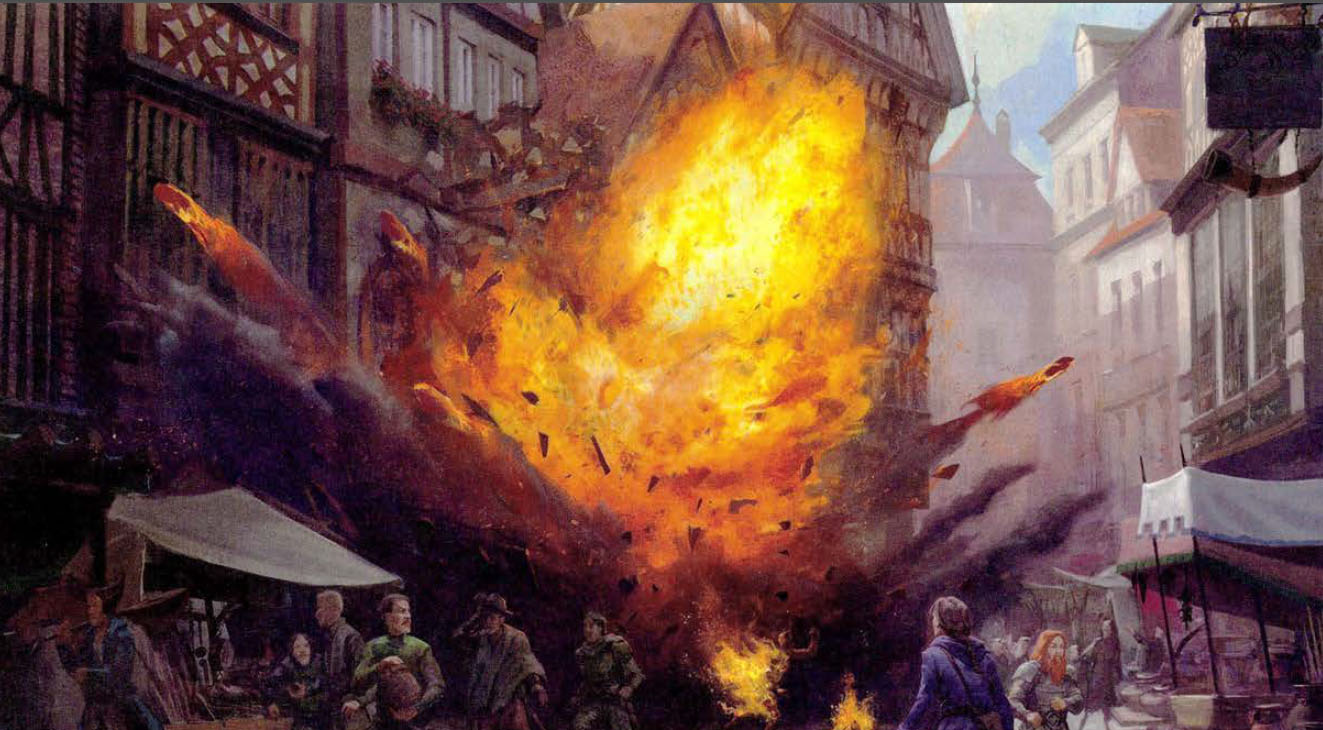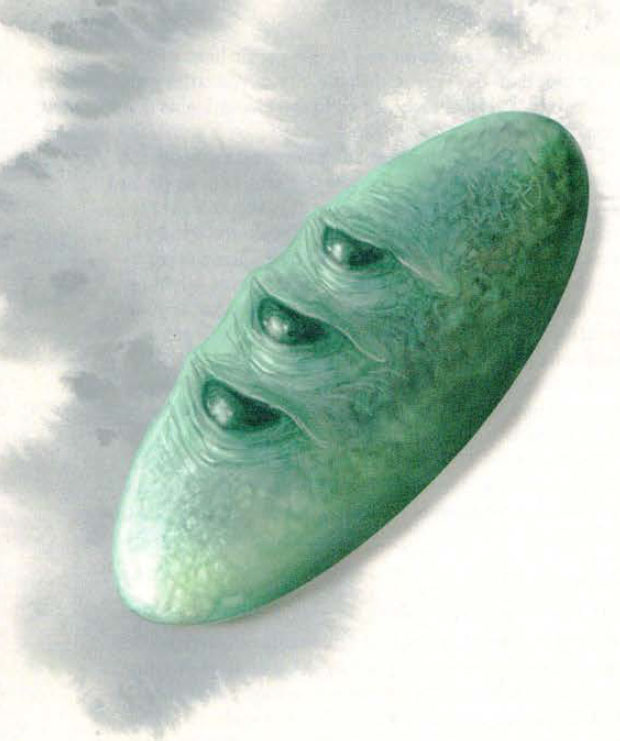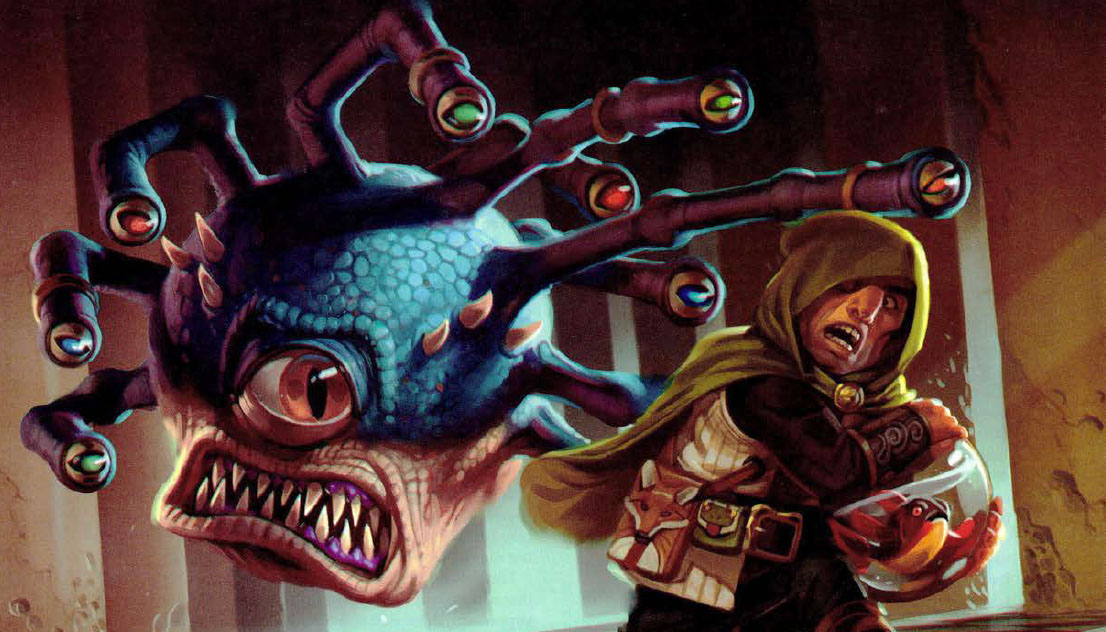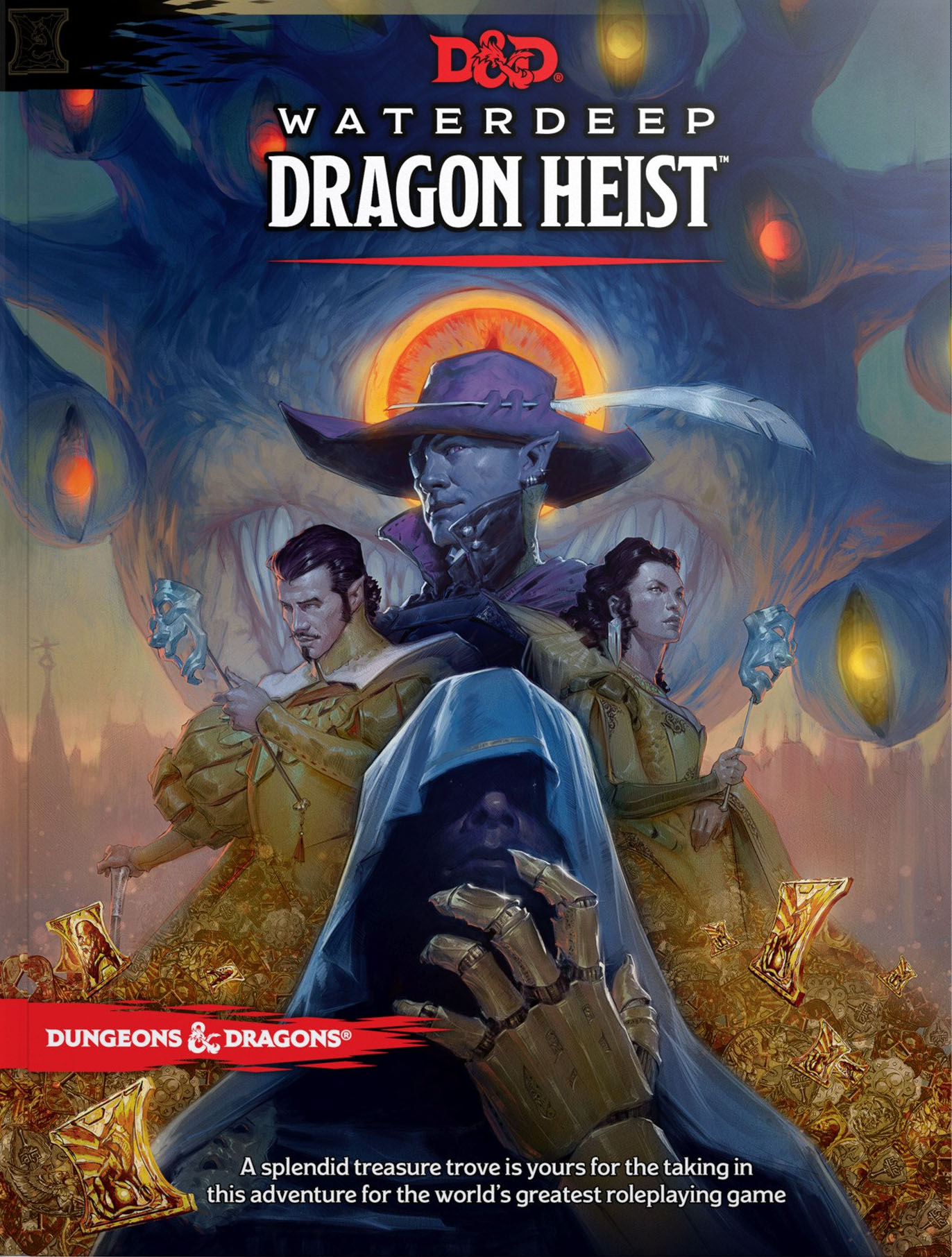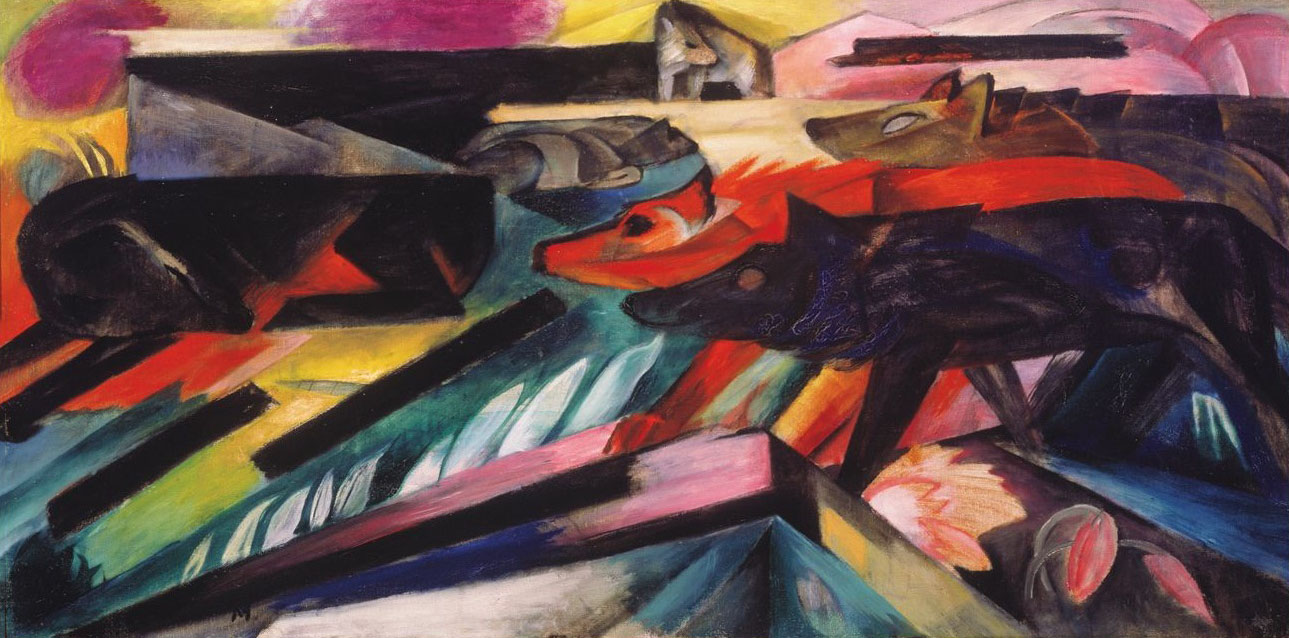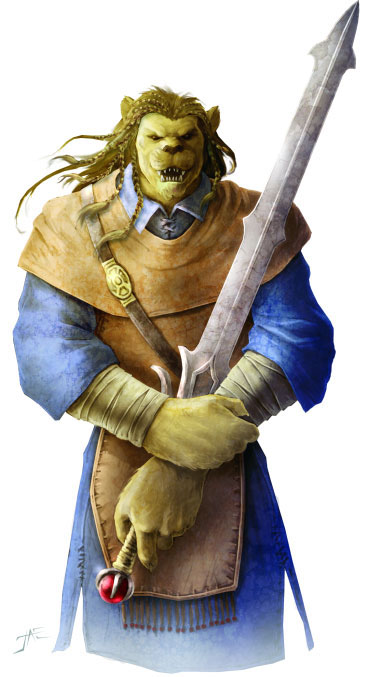SPOILERS FOR DRAGON HEIST
If you’re a local player in my campaigns, you might want to steer clear here. I may be running Dragon Heist in the future, but not for people who’ve read the plot.
I’ve been periodically checking out the published campaigns for D&D 5th Edition whenever one catches my eyes, hoping that it’ll be something super awesome that I can use to kick off a 5th Edition campaign. Hoard of the Dragon Queen was one of these, and that went… poorly.
Earlier this year, I started getting really, really excited about Waterdeep: Dragon Heist. It promised something distinctive: A heist-structured mini-campaign for D&D with the PCs competing against a complex web of factions in order to win a huge prize that would lead directly into a megadungeon campaign in the Dungeon of the Mad Mage! That would be amazing!
… that is not what Dragon Heist is.
First, there is no heist. And I know what you’re thinking. You’re thinking, “But Justin, the name of the book is Dragon Heist. Why wouldn’t there be a heist?” And I’m right there with you, because an overwhelming refrain as I read through this book was simply:
Why?
But… why?
And also: Why?
Okay, let’s take a step back and talk about what the story of Dragon Heist actually is. It basically breaks down into four parts:
- The PCs are hired to rescue someone who has been kidnapped. The person they rescue is virtually unimportant, but the other kidnap victim turns out to be the estranged son of a former Open Lord of Waterdeep who embezzled a bunch of money and hid it in a magical vault.
- The PCs are rewarded with the deed to an abandoned tavern. A little while later, a huge fireball goes off and kills a bunch of people just outside the tavern. Investigating the explosion will lead the PCs to discover that some bad guys have stolen a magic item (the Stone of Golorr) that will lead them to the magical vault.
- A Benny Hill chase sequence ensues, at the end of which the PCs have the Stone of Golorr.
- They go to the vault and loot it.
THINGS THAT MAKE NO SENSE
So one of the major problems with Dragon Heist is how much of it doesn’t really make any sense.
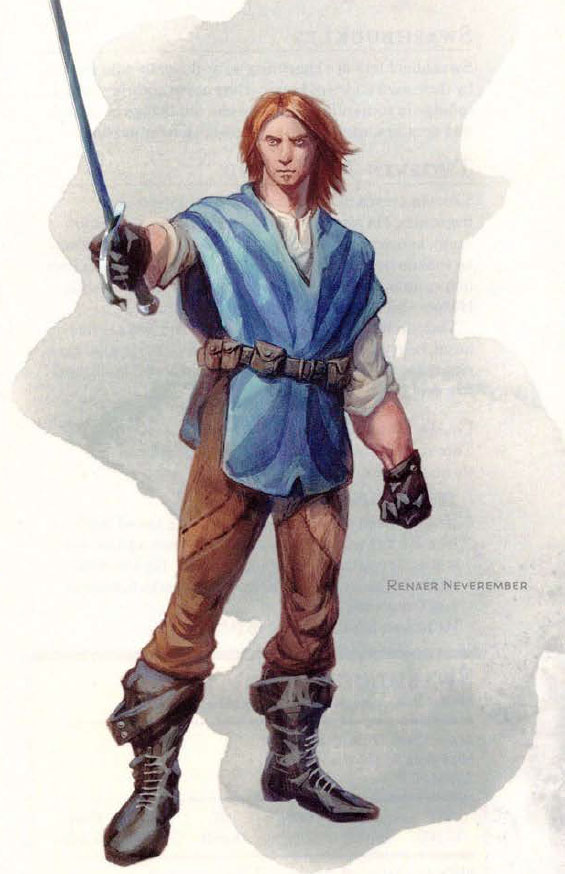 For example, the second part of the scenario works like this:
For example, the second part of the scenario works like this:
- Dalakhar is a spy who works for Lord Neverember. He has stolen the Stone of Golorr that leads to the vault, but is unable to leave Waterdeep and take the magic artifact to Lord Neverember because Zhent assassins are stalking him.
- He goes to members of Lord Neverember’s estranged son’s household and asks them to tell him where he can find the heroes who rescued the estranged son because he believes that anyone who would rescue Lord Neverember’s son can also be trusted to help him.
That doesn’t actually make sense. Why wouldn’t Dalakhar just ask Neverember’s son to help him? And if Dalakhar believes that the son is so estranged from his father that he would never help him, why would he believe that the son’s friends would be the only possible source of assistance? Why doesn’t he just ask his friends for help directly?
So then Dalakhar gets killed in the fireball that explodes outside of the PCs’ tavern. Where did the fireball come from? Well, Zhent assassins working with House Gralhund had successfully tracked him down. House Gralhund didn’t fully trust the Zhent assassins, however, and so sent their own agent to follow them and make sure the job got done right. “When it seemed as though Dalakhar might give [the Zhent assassins] the slip, this agent hurled one of the beads from the necklace [of fireballs] to stop the gnome in his tracks.”
Okay, fine. Except then it turns out that the Zhent assassins were also killed and/or badly injured in the fireball because they were literally mere feet away from Dalakhar when it went off. So… the Gralhund agent was so concerned that Dalakhar had escaped the Zhent asssassins – even though they were mere feet away from snatching him – that it decided to blow up an entire city block?
That doesn’t make any sense.
To be fair, I think the intention here may have been for the Gralhunds to be intentionally double-crossing the Zhent assassins by blowing them up along with Dalakhar. (There’s another passage later in the book that sort of suggests that might be true.) But it still doesn’t make sense because the Gralhunds’ agent immediately runs away, leaving the surviving Zhent assassin to collect the Stone of Golorr! It’s also obviously directly contradicted by the first passage.
Which is another problem: Dragon Heist is teeming with continuity errors. For example, in a later scene there’s a gazer who is invisibly following the PCs and watching their movements. When the PCs reach a particular location, the gazer waits outside and summons reinforcements from its gang. But when the PCs go inside, they discover that the gang members are… already there? How? Why?
FRAGILE STRUCTURE
Okay, Dalakhar and a bunch of other people have been blown up. So the PCs start investigating the explosion.
But… why?
There’s literally no reason given. The PCs are given no motivation to do so, and, in fact, the scenario goes out of its way to specifically discourage them from getting involved.
But, okay, the PCs start investigating the explosion. This investigation can follow one of two paths.
First option: Break into the morgue and use speak with dead spells. (This option is fine, if a little thin.)
Second option:
- Question witnesses and have one of them tell the PCs that she saw an automaton that “bears a striking similarity to the automatons that sometimes march in the Day of Wonders parade”, which is sponsored by the local temple of Gond.
- Go the Temple of Gond and discover that this is not, in fact, true and there are no such automatons that march in the Day of Wonders parade. (Because the adventure is teeming with continuity errors, remember?)
- The Temple of Gond does have a single automaton that matches this description, however. It’s known as a nimblewright. As the PCs approach the temple, the nimblewright will be on the roof flying a mechanical bird that will crash land on or near the PCs.
- If – and only if! – the PCs mention the incident with the mechanical bird to the priest of Gond they speak with, the priest will take them upstairs to the nimblewright’s room, chastise the nimblewright, and force the nimblewright to watch while acolytes pack up all of its mechanical inventions.
- If the PCs happen to have cast a detect magic spell while they watch the acolytes clear out the nimblewright’s stuff, they will notice that one of the items is magical.
- If they ask the nimblewright what this item is, it will turn out that the nimblewright has built a nimblewright detector! (What a lucky concidence!)
- If they use the nimblewright detector, they will discover that there are only four nimblewrights in the entire city of Waterdeep. (Lucky!)
- Three of them belong to someone who may or may not be the bad guy in this scenario. (More on that later.) Regardless, this is pure coincidence and irrelevant to the current investigation.
- The fourth is, in fact, the one they were looking for at Gralhund House!
This investigatory structure is so bizarre, arbitrary, and paper-thin in its rationale that I honestly find it difficult to understand why it was included in the book at all.
Fortunately, when this structure inevitably fails, the book does suggest that the GM just have an NPC randomly come by and tell the PCs where to go.
When I find stuff like this in a published scenario, I always kind of second guess myself: Am I the crazy one? Does this actually work for other groups? Well, the interesting thing about the rise of online actual plays is that you can very quickly do a survey of how scenarios actually play out, and notably every single DM running Dragon Heist online that I was able to find has been forced to improvise a fix for this broken structure.
And this is a pattern which repeats several times in Dragon Heist. The Benny Hill chase, for example, is largely built along a similar chain of implausible connections, leaving the GM with little choice but to force implausible-yet-predetermined outcomes.
Unsurprisingly, therefore, the book is pockmarked with exhortations for the GM to railroad their players, accented with a smattering of pixelbitching propped up with several “thou shalt not find this unless you jump through my very specific hoop” bits. (One of the silliest involves making it impossible for the PCs to succeed on an Investigation test because there’s a thin layer of dust on the floor.)
TIMELINE
Something else to mention here is that the adventure’s handling of time makes no sense. This is really a more specific iteration of Things That Make No Sense, but it’s pervasive enough to become a serious issue in its own right which any DM running the adventure will need to deal with.
- Dalakhar steals the Stone of Golorr from Xanathar.
- This triggers a gang war between the Zhentarim and Xanathar which has been going on for awhile when the PCs undertake their first mission.
- At the end of that mission, the PCs are rewarded with an abandoned tavern.
- A period of at least a tenday and probably several weeks now passes during which the PCs are assumed to be fixing up the tavern, joining various factions, doing missions for those factions, and advancing 1-2 more levels.
- Dalakhar, unable to get out of Waterdeep with the Stone, attempts to bring it to the PCs.
… what the heck has Dalakhar been doing for the past several weeks? The way the adventure is written, it actually seems as if he just stole the stone before coming to the PCs, but that can’t be true. And to make things even more confusing, there’s another timeline in which Dalakhar was keeping an eye on Neverember’s estranged son, and then abruptly stopped doing that to infiltrate Xanathar’s operation, but the dates in that timeline aren’t really consistent with the other events described, either.
Another example: After the PCs trace the nimblewright to Gralhund House, Lady Gralhund orders the nimblewright to deliver the Stone of Golorr to a courier who will carry it to her master. (Why not just deliver it directly to her master? I can’t help you.) In the adventure as written, it’s supposed to take the PCs several days to find the nimblewright and discover where it took the Stone of Golorr.
You might be thinking, “Well, that’s too bad. They’ll be way too late to stop those couriers from delivering the Stone of Golorr!” Thankfully, however, the bad guys all politely wait for the PCs to show up before suddenly remembering they have a package to deliver and rushing off to do so in the Benny Hill chase sequence.
I think my favorite sequence here is:
- The bad guy tells five cultists about the Stone of Golorr and sends them to pick it up from the nimblewright. But he simultaneously orders two of the cultists to murder the other three because now they know too much about the Stone of Golorr and must be silenced! (But… why?)
- They botch the job and leave one of the other cultists still alive. This cultist then lies unconscious in a mausoleum for several days until the PCs find her and wake her up. She tells them where the other two cultists went.
- Thankfully, instead of just having the cultists bring the Stone of Golorr directly to him (despite that being the most logical course of action), the bad guy has ordered them to wait at a converted windmill for – and I emphasize this once again – several days twiddling their thumbs for no reason.
- The bad guy eventually sends three spined devils to pick up the Stone of Golorr. With absolutely incredible timing, these spined devils arrive just after the PCs enter the converted windmill, but just before the PCs can climb the stairs and retrieve the Stone for themselves.
Cue the Benny Hill soundtrack.
And there are four different variations of this nonsense, because…
PICK A VILLAIN
Dragon Heist has a gimmick: It has four different villains.
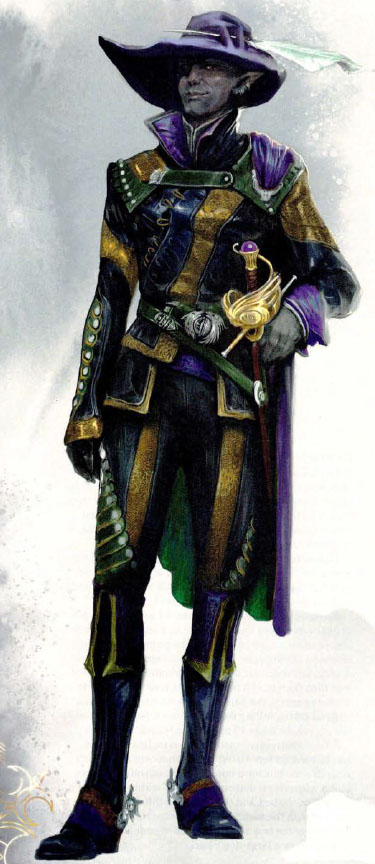 Before the campaign begins, the GM picks one of these villains:
Before the campaign begins, the GM picks one of these villains:
- Xanathar, a beholder crime boss
- Jarlaxle Baenre, a drow swashbuckler who is the secret lord of a city and also runs a traveling circus
- the Cassalanters, a demon-worshipping noble family
- the Zhentarim, a network of assassins and mercenaries
This decision also determines what season the campaign takes place (spring, summer, autumn, or winter). With one exception there is no actual connection between the villain and the time of year, but it does provide an interesting vehicle for emphasizing to the GM how the setting of Waterdeep changes over the course of a year.
The villain the DM chooses essentially affects three moments in the adventure:
- It’s their minions the PCs are chasing during the Benny Hill chase
- It’s their minions who track the PCs to the vault (even though they generally have no way of doing that) and fight them as they attempt to leave.
- Each of them has a unique and elaborately detailed lair.
So, roughly speaking, at least three-quarters of the adventure is totally unaffected by the choice of villain. And where it gets weird is that most (but not all) of the villains are included in the scenario even if they’re not the villain you selected. So, for example, Xanathar is intensely interested in the vault at the beginning of the scenario regardless of whether or not the DM selected him to be the main bad guy, but then he just… stops caring? Jarlaxle will kind of randomly show up and you’re supposed to stage a random, lengthy scene with him which will, if he’s not actually involved with the vault storyline, result in… nothing?
Oddly, the most compelling and interesting villains – the Cassalanters – are the ones who only show up if you select them as the main villains. (Although, as written, it’s very likely that the PCs will never even realize that the Cassalanters are their antagonist, and it’s virtually certain they’ll never find out the really interesting reason the Cassalanters are interested in the vault without the GM rewriting a bunch of stuff.)
This is all baffling. And it becomes more so as we look at how these villainous components were actually implemented.
THE BENNY HILL CHASE: As I mentioned, this section of the adventure starts with the PCs discovering who the Gralhunds’ nimblewright delivered the Stone of Golorr to. There are four different variations of this sequence (one for each villain), but they’re all pretty similar and consist of the PCs chasing one set of bad guys and then, just as they’re about to grab the Stone of Golorr, a completely random new bad guy will leap out of the shadows, grab the Stone, and run off!

In most of these sequences the GM is instructed to not once, but TWICE use the chase rules from the DMG and then, as soon as the PCs succeed at the chase, pull the, “Ha ha!” moment.
Whatever.
There’s a bunch of other painful railroading in this sequence, too. (Including old chestnuts like “the city watch magically finds them no matter where they are and no matter what precautions they take and arrest them”.)
But it gets weirder, because the way they’ve decided to design this sequence is to take ten generic locations, add a little text customizing them to each villain’s minions, and then shuffle up the order in which you encounter them based on which villain’s minions you’re chasing.
But… why?
It’s difficult to really describe how pointlessly convoluted this whole approach is. I spent an enormous amount of time trying to figure out what the benefit of this was supposed to be. They’d spent so much time constructing this Rube Goldbergian structure that I thought there surely must have been some purpose behind doing so.
But there just… isn’t.
In fact, it’s all negative value: If you want to run the adventure strictly as written, the presentation is just unnecessarily confusing. If you were thinking that you might try to remix Dragon Heist in order to bring all the villainous factions into play simultaneously, the design of this section only serves to block you from doing so (because your players will notice if a bunch of different factions are all independently holed up in identical windmills).
THE LAIRS: Dragon Heist spends a little over 60 pages describing each of the villains’ lairs in lavish detail. Here, at long last, a strong and unique spotlight is shone on each of the villains.
But if you glance back up to the beginning of this review where I summarized the plot of Dragon Heist, you may notice that “go to the villain’s lair” does not appear in the list of events.
That’s because in the adventure as designed, the PCs don’t go to any of these lairs.
“That makes no sense! Why would you spend 60 pages describing these lairs and then write up a scenario structure in which they’re never used? You must be pulling my leg, Justin!”
No. I’m not. The DM is, in fact, repeatedly told that the PCs don’t need to go there, probably won’t go there, and if they do go there and actually confront any of the villains, they’ll almost certainly be killed.
But… why?
CONCLUDING THOUGHTS
This book made me feel dumb.
Great care was clearly put into its construction. Enormous effort was exerted in order to erect, for example, the Rube Goldbergian Benny Hill chase sequence. The “pick a villain” gimmick required a ton of extra work. It all suggested that there must be some meaning in the madness that I was seeing.
And so I spent inordinate amounts of time flipping back and forth through the book, trying to figure out what I was missing.
Ultimately, though, I don’t think I’m missing anything. Dragon Heist is just a mess.
Take the “pick a villain” thing, for example. I’ve seen it hyped up for giving the scenario “replayability”, but that’s not really true: As I mentioned before, fully three-quarters of the scenario isn’t affected by the villain swap-out. Dragon Heist is no more replayable than any other scenario.
My most charitable conclusion is that the goal might have been to create distinctly different versions of the plot in order to support rewatchability (not playability) for the audience of actual play streamers. (In other words, the second time you watch a streaming group playing Dragon Heist you’re surprised to discover the plot suddenly going in a different direction!) But just designing a scenario featuring dynamic faction play would have had the same result without turning your scenario’s spine into generic mush and having the GM ignore half the book’s content.
There are also places where you can squint and kind of imagine what the useful intention might have been. The Benny Hill Chase of Generic Locations, for example, might have been an exemplar of how to build an adventure out of customized generic urban locations. But the book doesn’t actually provide a stockpile of such generic locations, so even if that was the intention, it doesn’t really go anywhere.
Similarly, there are a number of scenes (like the Jarlaxle one) where it feels as if the scenario is almost trying to allow the ultimate bad guy to evolve organically out of the events of the campaign. But none of that goes anywhere, either, because the “DM picks the villain before the campaign starts” structure is pretty heavily embedded.
In many ways, Dragon Heist feels like the shattered remnants of a broken development cycle. It feels as if they were aiming for something ambitious, didn’t achieve it (or maybe it fell apart in playtests), and they ended up kind of cobbling together something that was at least mostly functional out of the wreckage.
So here’s the big question: Do I recommend Dragon Heist?
…
… how much work are you willing to put into fixing it?
I came to Dragon Heist because I wanted something that I could basically run out of the box. That’s not really what I found: I could probably technically run it as written, but I wouldn’t feel good about myself as a DM. So, for me, Dragon Heist is a failure.
If I was in a slightly different place in my life right now – one where I had the time necessary to heavily modify the scenario – I might feel differently: Dragon Heist is filled with interesting NPCs, studded with a number of good set pieces, and has an intriguing (if unfortunately squandered) premise. It’s drenched with absolutely stunning art, including excellent portraits for most of the NPCs you’ll encounter. It’s also an excellent introduction to the rich setting of Waterdeep, with the decision in the second part of the adventure to gift the PCs with an abandoned tavern (although it is largely unconnected to the rest of the scenario) being an inspired one to tie the PCs into the community.
In short, there’s a solid foundation here and a lot of good raw material to work with. But you will need to put in a fair amount of labor to realize its potential.
Here’s another way to think of it: Without the “villain swap” gimmick and a couple other instances of bloat, this could have easily been a 64 page module plus about 32 pages of gazetteer information. If you think of this as a 96 page book with a bunch of other pages that have been specifically designed so that you can’t use them, it’s really difficult to justify this as a $50 product.
If you’re willing to put in the substantial work necessary to actually get 100% utility out of the book, then your personal calculus may change.
Style: 4
Substance: 2
Author: Christopher Perkins (with James J. Haeck, James Introcaso, Adam Lee, Matt Sernett, Jeremy Crawford, Ben Petrisor, Kate Welch, Matthew Mercer, Charles Sanders)
Publisher: Wizards of the Coast
Cost: $49.95
Page Count: 224

